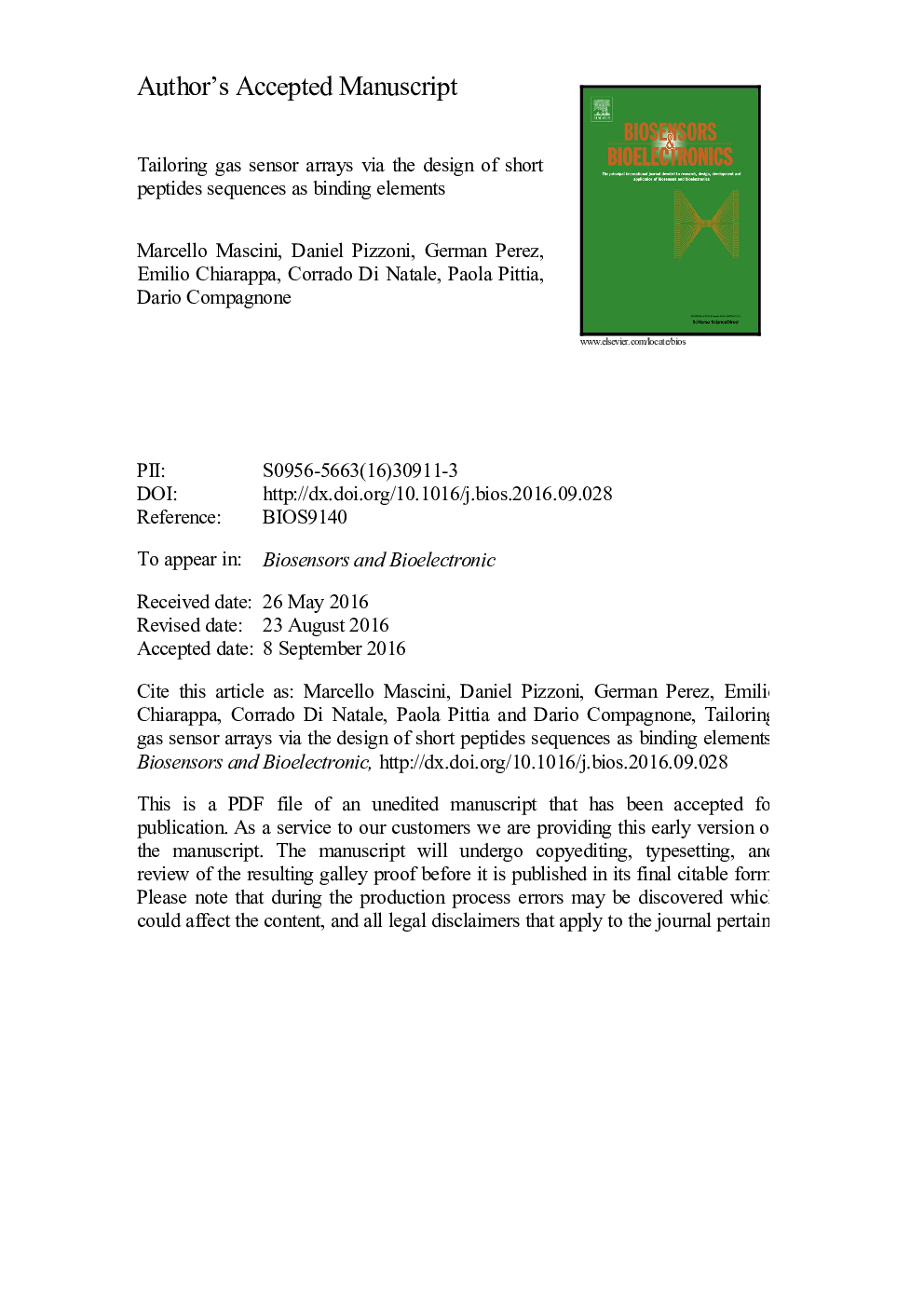| Article ID | Journal | Published Year | Pages | File Type |
|---|---|---|---|---|
| 5031537 | Biosensors and Bioelectronics | 2017 | 27 Pages |
Abstract
A semi-combinatorial virtual approach was used to prepare peptide-based gas sensors with binding properties towards five different chemical classes (alcohols, aldehydes, esters, hydrocarbons and ketones). Molecular docking simulations were conducted for a complete tripeptide library (8000 elements) versus 58 volatile compounds belonging to those five chemical classes. By maximizing the differences between chemical classes, a subset of 120 tripeptides was extracted and used as scaffolds for generating a combinatorial library of 7912 tetrapeptides. This library was processed in an analogous way to the former. Five tetrapeptides (IHRI, KSDS, LGFD, TGKF and WHVS) were chosen depending on their virtual affinity and cross-reactivity for the experimental step. The five peptides were covalently bound to gold nanoparticles by adding a terminal cysteine to each tetrapeptide and deposited onto 20Â MHz quartz crystal microbalances to construct the gas sensors. The behavior of peptides after this chemical modification was simulated at the pH range used in the immobilization step. ÎF signals analyzed by principal component analysis matched the virtually screened data. The array was able to clearly discriminate the 13 volatile compounds tested based on their hydrophobicity and hydrophilicity molecules as well as the molecular weight.
Keywords
Related Topics
Physical Sciences and Engineering
Chemistry
Analytical Chemistry
Authors
Marcello Mascini, Daniel Pizzoni, German Perez, Emilio Chiarappa, Corrado Di Natale, Paola Pittia, Dario Compagnone,
